• 14 February 2024
Facial muscles are what control our expressions, and we’re using them every minute of every day. This continuous movement in the same direction causes them to lose elasticity over time, resulting in a more droopy, aged appearance. These facial muscles need exercise in both directions to stay healthy, lifted and plump—just like any other muscle in the body. That’s where microcurrent comes in.
Microcurrent re-educates the facial muscles back to their original shape and lifted position, similar to working through knots and strain during a professional physio session. In order to re-establish muscle integrity, microcurrent actively lengthens and shortens each facial muscle using a range of technical movements and electrical stimulation. This technology is safe, comfortable and non-invasive with no downtime required. You can book a professional microcurrent facial in most clinics around the world, as well as top up results between appointments with a portable, clinic-grade microcurrent face device designed for home use. Here’s everything you need to know about microcurrent facials and the best at home microcurrent facial devices on the market.
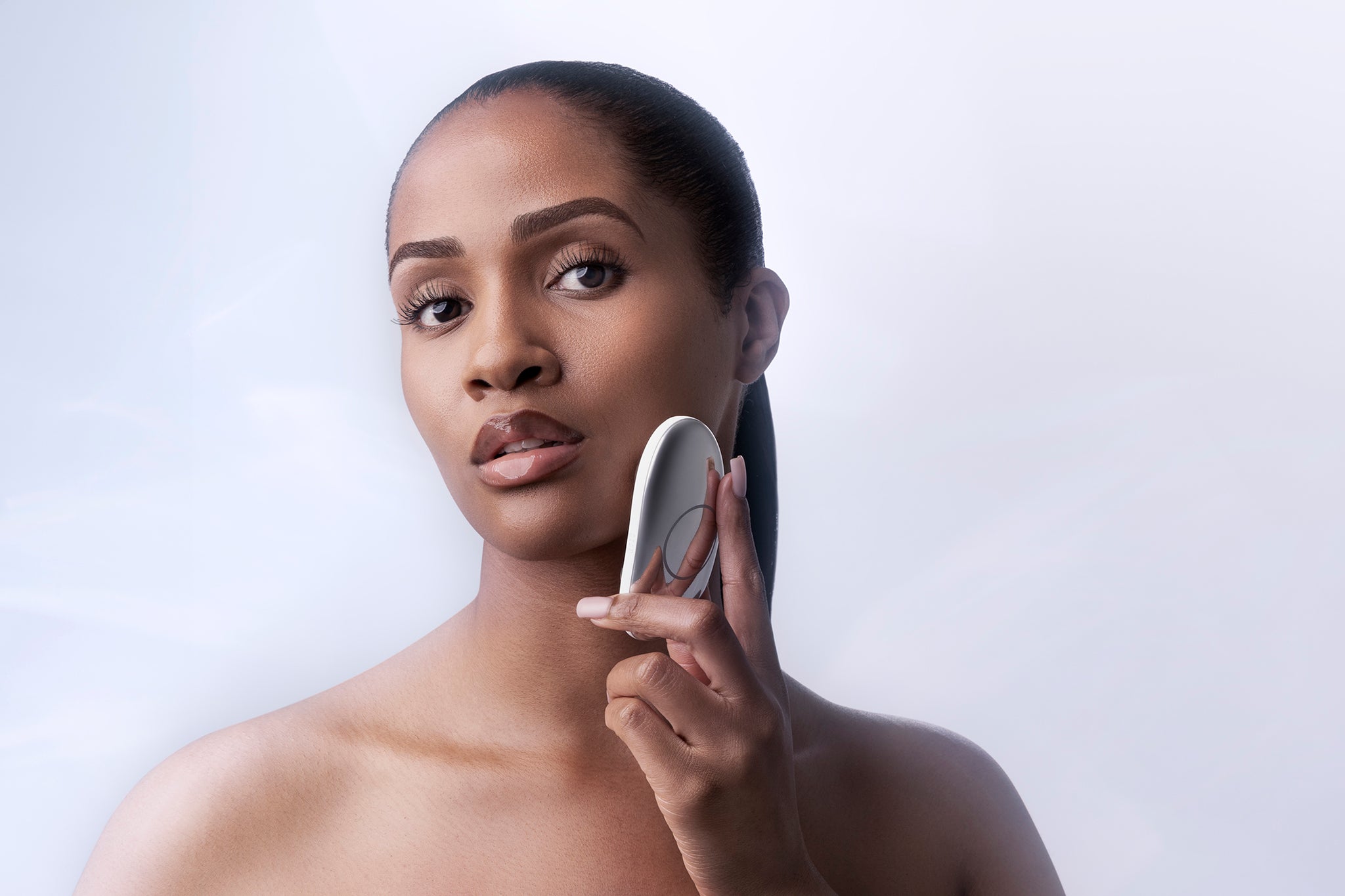
What is microcurrent?
Microcurrent is a form of low-level electrical current that mimics the body’s natural electrical signals. For decades, medical professionals have used microcurrent treatments to address facial paralysis and to accelerate the delivery of medicine through the skin’s surface. Extensive research has shown that microcurrent has the ability to increase the body’s healing process by 250 to 350 percent. These gentle electrical waves can also microsculpt your face by stimulating the facial muscles, promoting wound healing and boosting cellular rejuvenation through increased blood circulation and collagen production.
Microcurrent benefits
One of the key benefits of microcurrent facial toning is the lifted, sculpted results that are achieved naturally and holistically. Many studies have shown, including those published in the European Journal of Applied Physiology, prove that microcurrent directly stimulates muscle cells.
The microcurrent impulses coax the facial muscles into either contracting or releasing tension based on what your muscles need. This process is what professionals call “muscle re-education.” It’s the process of prompting your muscles to assume their ideal, unburdened positions, unencumbered by excessive facial expressions or tension. This form of microsculpting diminishes the signs of ageing by building up the muscle mass in lax facial muscles, helping to tighten the overlying sagging skin as a result.
Collagen levels naturally decrease by 1% each year after the age of 25 years old, which leads to the slow formation of fine lines and the development of deep wrinkles. Microcurrent facials address this decline of collagen by stimulating the cells responsible for producing collagen and elastin, known as fibroblasts. As the most abundant protein is our body, collagen is the primary building block of the skin and muscles—the key to healthy skin elasticity and bounce.
Microcurrent facials also improve skin texture and tone, particularly effective in reducing the appearance of scarring and enlarged pores. The enhanced blood flow provides essential nutrients and oxygen to your skin and facial muscles, making them perform at their best. Microcurrent can be used daily as a non-invasive treatment alongside other rejuvenating procedures, such as microdermabrasion, microneedling and facelifts.
What are the results of microcurrent
These are the benefits of microcurrent you can expect to achieve after a course of around 10 microcurrent facials:
✔️ Boost in ATP (adenosine triphosphate) production
✔️ Increase in protein synthesis
✔️ Stimulated production of collagen, elastin and amino acids
✔️ Improved blood circulation
✔️ Helps cells to eliminate waste products and toxins
✔️ Restores healthy cell balance
Here’s what you can visibly achieve with microcurrent:
✔️ Improved skin tone and texture
✔️ Decreases puffiness and inflammation
✔️ Reduced fine lines and wrinkles
✔️ Tighter and firmer skin with enhanced facial contour
✔️ Lift sagging jowls and droopy eyelids
Some researchers found that microcurrent can also improve acne, whilst others say don’t use it if you suffer from this skin condition. Consult your dermatologist, aesthetician or clinician for further information based on your personal requirements.
What is a microcurrent facial?
Microcurrent facials have become a popular choice for anyone looking to effectively lift and tone their face, without getting invasive procedures. A microcurrent facial is a clinic-based practice that rejuvenates the skin using specifically designed, ultra-low level electrical current. These professional microcurrent devices are equipped with a pair of electrodes to stimulate the skin—one has a negative charge, the other a positive charge. When these charges are used simultaneously in a specific direction of movement, they have the ability to lengthen and shorten the muscles back to their original shape and location.
How long does a microcurrent facial last?
Non-invasive microcurrent face lifts deliver instant results, which typically last 3 to 6 weeks. However, with consistent use of microcurrent therapy, the build-up of natural collagen, elastin and muscle mass can be permanent. This gives a more firm and youthful appearance that lasts longer than the occasional, infrequent microcurrent treatment.
What to expect during your microcurrent facial
Most people experience a tingling sensation, facial twitching and mild sensitivity. Microcurrent isn’t strong enough to cause injury when used correctly, and they shouldn’t hurt or damage the skin. If you’re in-clinic, your dermatologist or aesthetician may combine microcurrent treatments with face masks, serums, lymphatic massages or red LED light therapy. They’ll often tailor the appointment based on your skin. For anyone using home use microcurrent facial toning devices, each machine will vary in power intensity, technique, functionality and duration.
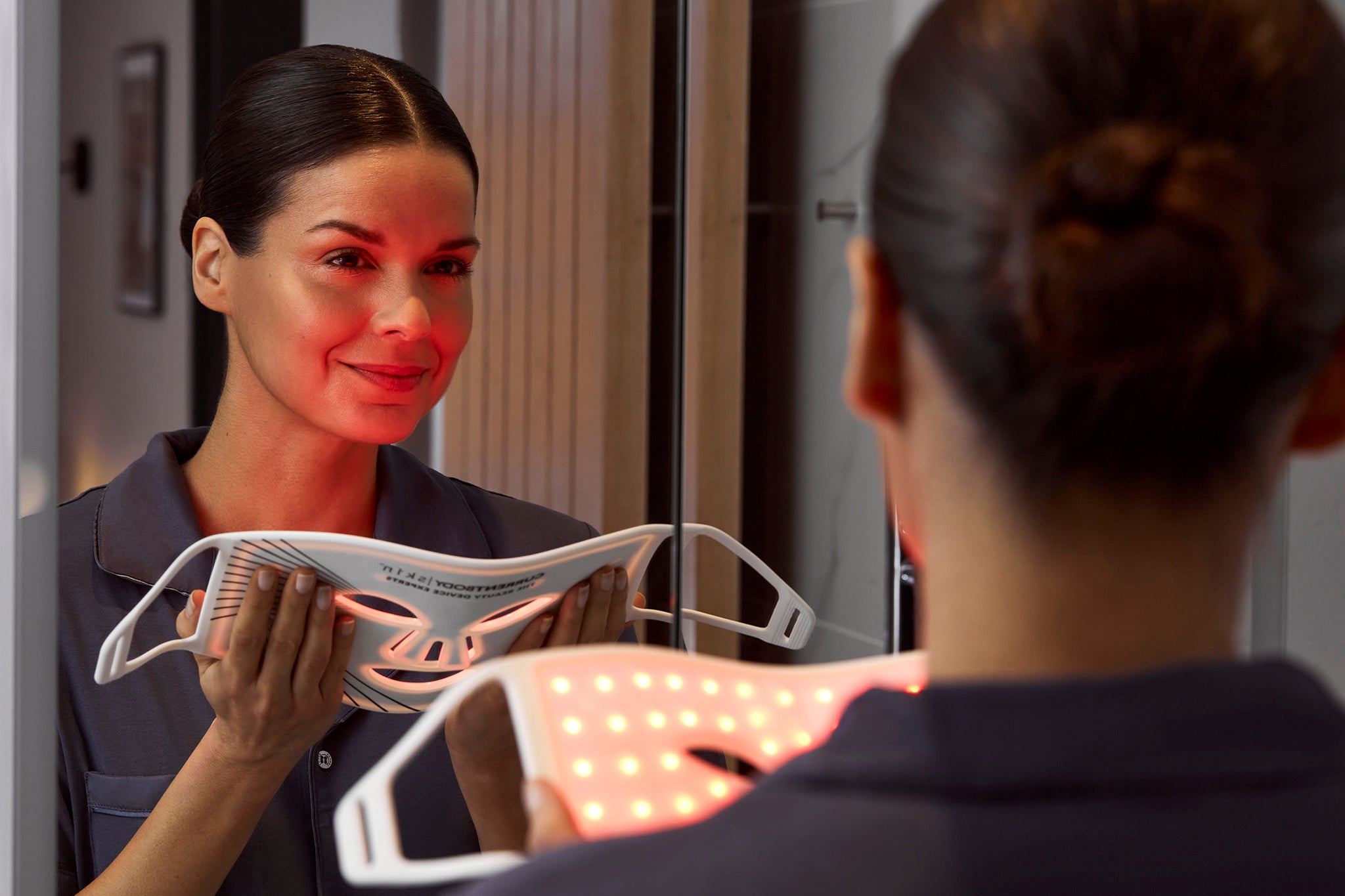
Who does microcurrent work for?
ATP (adenosine triphosphate) is responsible for giving our skin cells and muscle tissue the releasable energy they need to optimally function. Our muscles lose ATP (adenosine triphosphate) as we age, with levels usually dropping from the age of 35 years depending on genetics and lifestyle factors. Gradually the skin will sag, expression lines begin to form and the facial muscles soften and droop.
Microcurrent is best for corrective anti-ageing, preventative anti-ageing and a visible health boost. Not suitable for anyone under the age of 18 years old. This technology is also compatible with both men and women (including non-binary), as long as the skin is free from stubble and thick facial hair.
Skin types
Professional microcurrent machines will be moderated by your clinician based on your skin's condition. Whereas at home microcurrent face devices are best for mild to moderate sagging skin on any skin type. Do not use these devices on swollen, raised, bleeding, broken, excessively red, painful or inflamed skin, broken capillaries, varicose veins or facial piercings.
Sensitivity test
Prior to use, make sure your skin is dry, clean and free from skincare products such as moisturisers, serums or makeup. Make sure you remove all jewellery from the treatment area and from your hands. If you’ve used an oil cleanser, ensure there isn’t any residue left on the skin as oil will block the microcurrent conduction. Hair can interfere with the conductivity of the globes, therefore it’s recommended to shave facial hair before use.
💧 Apply a thumbnail size amount of microcurrent conductive gel to the treatment area and spread it evenly to the size of the palm of your hand.
⚡ Switch on your microcurrent face device and move in small circular motions over the gel for 3 minutes. Stop the test immediately if you feel uncomfortable or see adverse effects.
⏱️ Wait 48 hours and examine the tested area. If your skin in the tested area appears normal, then you’re in the clear and can start a full microcurrent treatment.
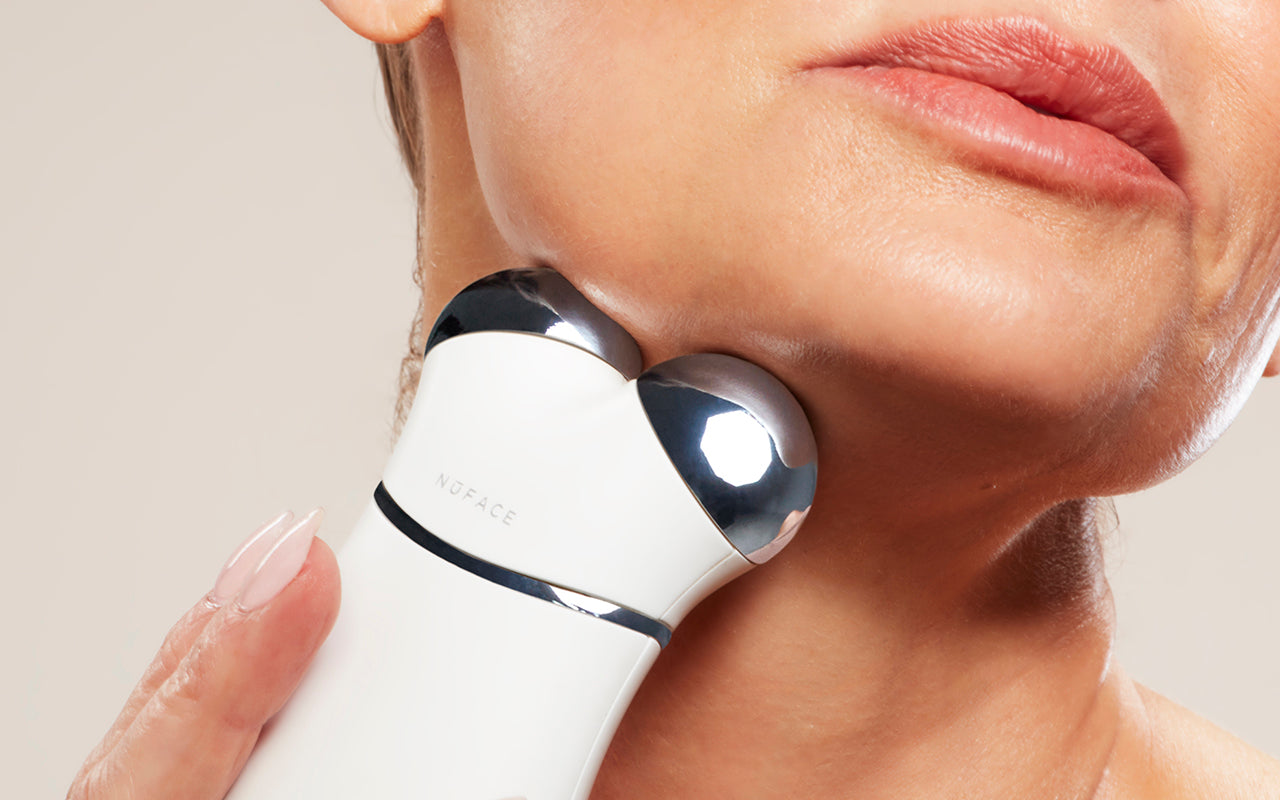
Can you microcurrent after Botox?
Microcurrent therapy stimulates and activates the muscles, while Botox freezes their organic movement—a method for smoothing or preventing expression lines. When ATP (adenosine triphosphate) is added to muscles via microcurrent, it brings blood flow to the facial muscles to “bring them back to life.” Some experts have found that using microcurrent before your Botox treatment, can actually help the Botox to last longer.
If you’ve recently had Botox administered to a certain area, it’s advised to avoid microcurrent facials for around 2 weeks to allow the formula to take effect. Speak with your clinician for personalised advice. And if you’re in the phase where your Botox is running out, then microcurrent facials could be a method for replacing future Botox appointments altogether. Consistent microcurrent treatments play an important role in preserving the vitality of these frozen facial muscles due to the increase in beneficial blood circulation.
How to use microcurrent
Here’s how to achieve a microcurrent facial from home using an at home microcurrent facial device.
Start with clean, fresh skin free from any skincare or makeup products as these may compromise the efficacy of the microcurrent conduction to your skin. Apply a mask-like layer of conductive gel to your face and neck, avoiding the delicate eye area. Gently glide the microcurrent device over your gel, following the recommended treatment plans provided by your microcurrent facial machine. Once your treatment is complete, wash away the gel and continue with the rest of your skincare routine.
Follow up with 10 minutes of red LED light therapy to encourage accelerated collagen production if one of your key concerns is fine lines, wrinkles, redness or inflammation. See more about red light therapy here.
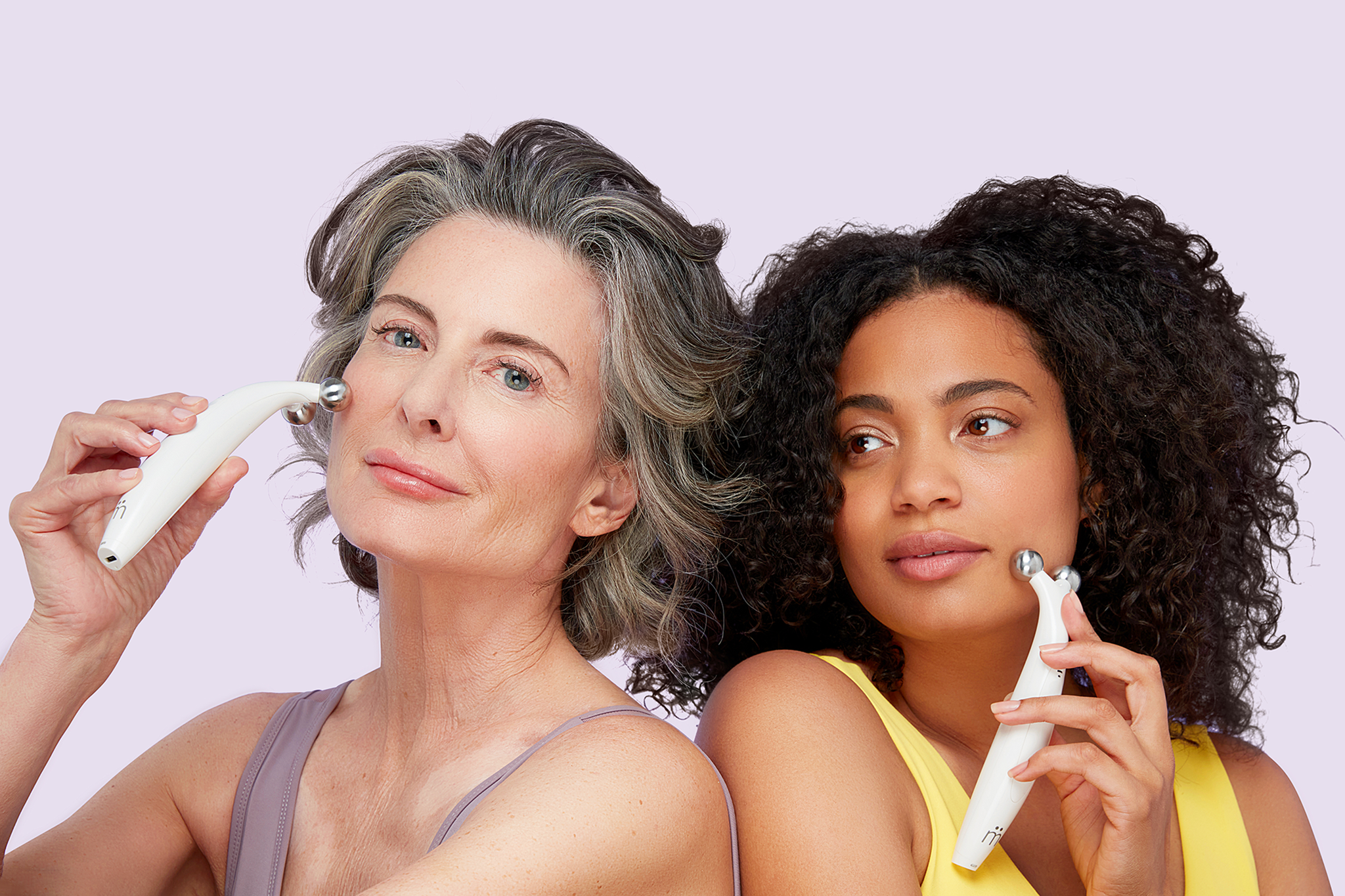
Many at home microcurrent facial machines, such as the MyoLift™ QT Plus, ZIIP HALO and FOREO BEAR™ 2 connect to an app that offers customised plans and tutorials based on your specific needs.
On average, a microcurrent facial session can take anywhere between 2 to 20 minutes—but the duration can vary depending on your device and treatment programme. Start with daily microcurrent sessions that last around 3 to 6 minutes for your first 2 weeks, then 3 times per week going forward to maintain your results. Always follow the instructions and contraindications of your device.
What are the best microcurrent facial devices?
When looking for the best lifting and facial toning device on the market, there are a few key things to keep in mind.
The electrical dosage of microcurrent delivered is counted in microamps. Clinical studies have shown that microcurrent doses lower than 500µA (microamps) can boost ATP production by up to 500%—with ATP sharply dropping when the voltage is greater than 500µA.
Before a professional or home use microcurrent device is sold or marketed in the US, they must have FDA approval. This means that the manufacturer has submitted evidence that it’s safe to use, effective and the benefits outweigh the risks. The FDA has cleared several at home microcurrent devices, including ZIIP, MyoLift™ and NuFACE which are classified as class II medical devices. Look for FDA-approved devices for the best possible results, efficacy and functionality.
From hundreds of microcurrent face devices on the market, we selected the most advanced professional microcurrent device and the easiest, yet most effective portable microcurrent device—both designed for home use.
How to do an advanced MyoLift™ Triwave microcurrent facial
The pre-calibrated MyoLift™ Triwave Treatment offers a 3-step system with an adjustable output from 175µA to 400µA. Its unique double-tipped probe applicators are designed for optimal skin contact, emitting a gentle electrical current which continually alternates between the positive and negative spheres. Battery-operated, FDA-cleared, non-invasive, this microcurrent machine is portable and intended for professional or home use. Apply microcurrent conductive gel as and when needed
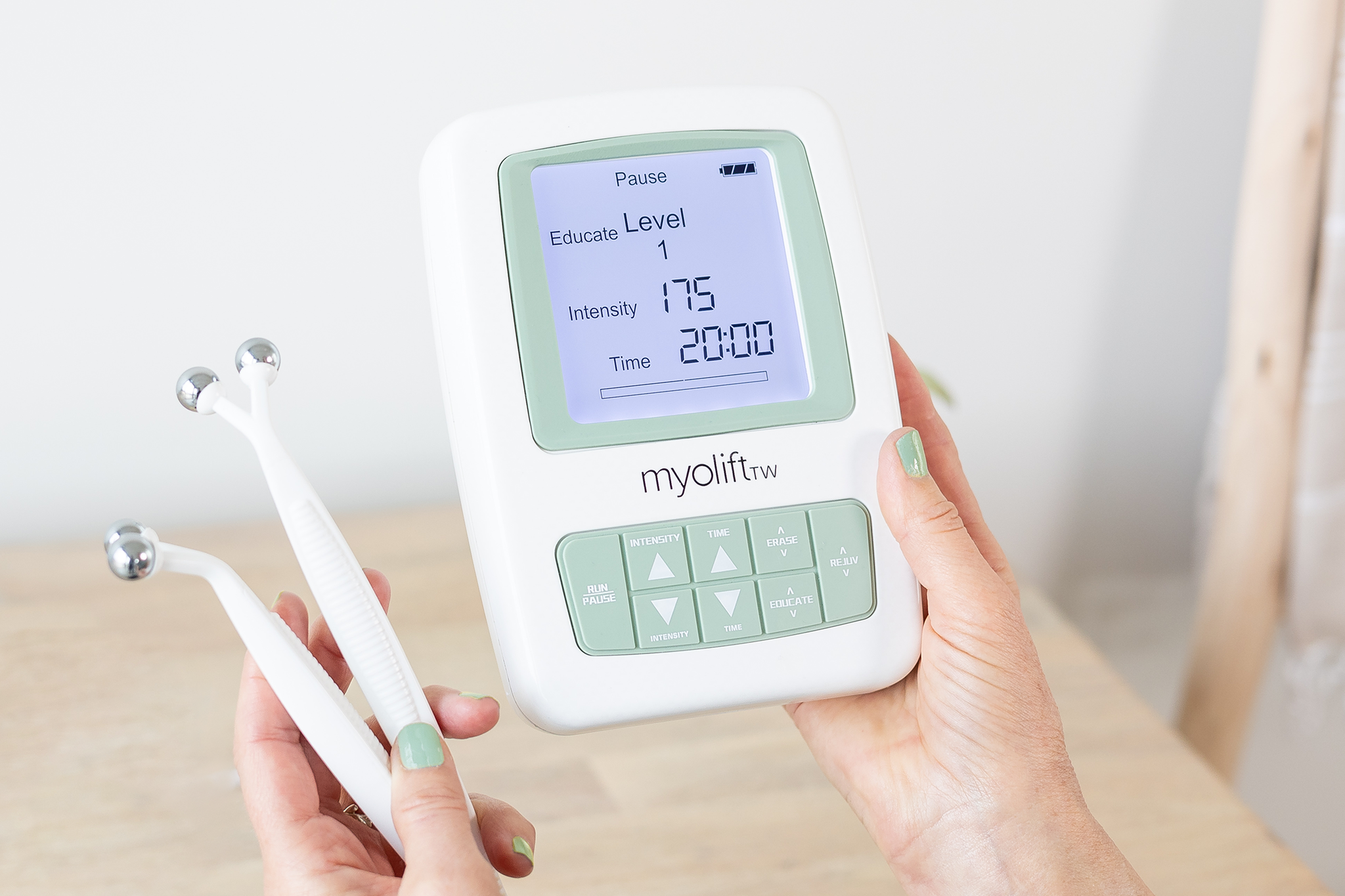
Rejuv mode is responsible for eliminating toxins from the face and neck area using a pumping (sawtooth) waveform to activate the lymphatic system. This waveform reduces puffiness, inflammation and fluid retention around the eyes and jawline. Repeat the Rejuve Level 1 mode 3 times at the 175µA dosage, then repeat the Rejuv Level 2 mode 5 times at a dosage of 300µA.
Erase mode uses a preset waveform to lengthen the muscles around the eye area, forehead, lips—ideal for thinner skin. Erase Level 1 focuses on skin texture and fine lines at a dosage of 175µA to soften scar tissue and reduce expression lines. Erase Level 2 is pre-calibrated to 350µA for reducing lines and wrinkles at various depths—decrease the intensity if it feels too strong or brings a visible twitch to the muscles.
Educate mode utilises a combination of waveforms to shorten lax muscles on the face and neck (not including the thyroid). These muscles include the lower cheeks and jowls, sides of the mouth, nasolabial folds, upper lip and around the eyes. Educate Level 1 uses a 175µA dosage to lift, tighten and tone the skin and superficial muscles, while Educate Level 2 at 350µA focuses on toning muscles at various depths. Decrease the intensity if it feels too strong.
The MyoLift™ Triwave microcurrent treatment should take approximately 20 minutes to complete. Repeat 3 times per week until you’ve achieved your desired results, then maintain once every 4 weeks. MyoLift™ recommends initially using this device in a series of 2 to 4 treatments per week. And if 3 months have passed since your last microcurrent facial, then you will need to restart the series.
How to do an easy ZIIP HALO microcurrent facial in 4 minutes
The ZIIP HALO Facial Toning Device uses a unique combination of microcurrent and nanocurrent through a range of up to 26 different waveforms and intensities. This handheld microcurrent face device uses two globes with a dosage between 900nA to 400µA to effectively stimulate collagen and ATP (adenosine triphosphate) production. The addition of nanocurrent is what sets this home use microcurrent device apart from others on the market. Nanocurrent are extremely low-level electrical currents that sync with the impulses sent from your brain to your skin cells, facilitating growth and repair. This helps to regulate skin cell regeneration and higher collagen production than microcurrent.
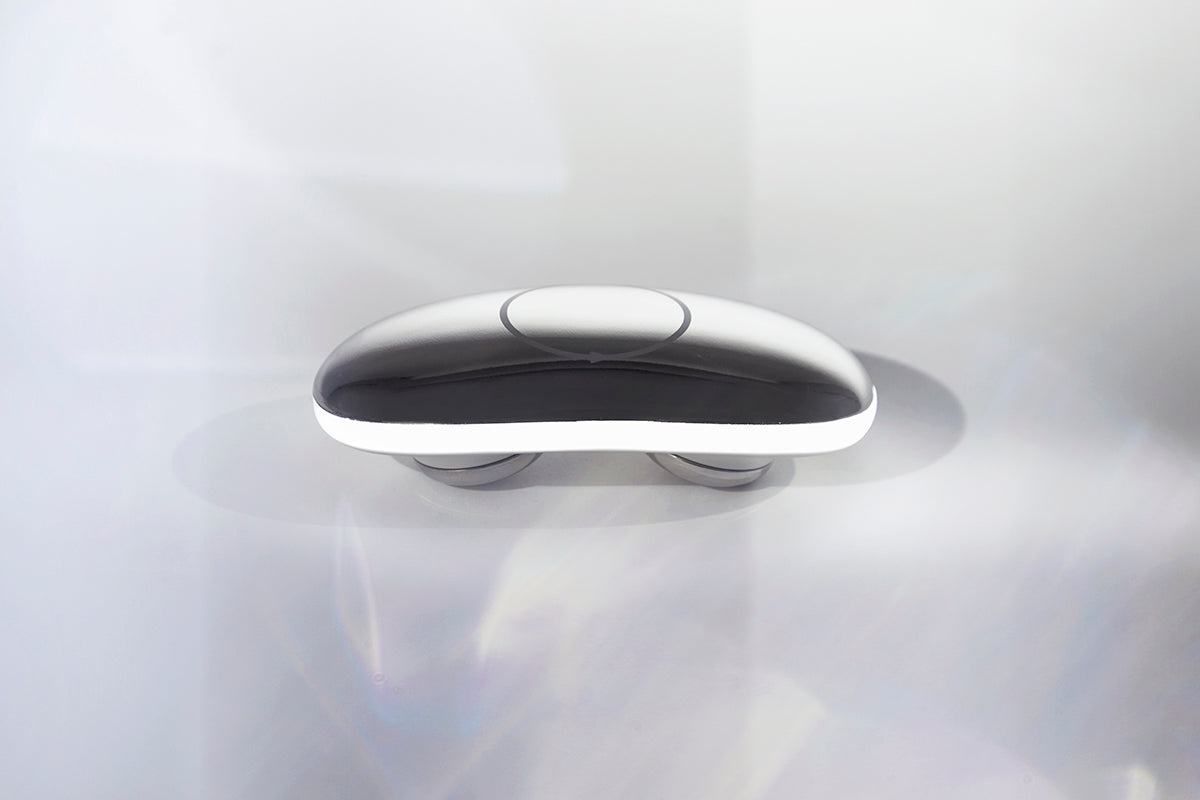
To get started, the ZIIP HALO comes preset with a 4-minute facial lifting treatment that can be used without guidance from an app or instruction manual. Apply 4 to 8 pumps of the ZIIP Electric Complex Gel to clean, dry skin before turning on the ZIIP HALO. Touch the globes to one side of your neck, then lift over your jawline, cheeks, go around the eyes, past the temples and over the forehead. You’ll feel a vibration when it's time for the next lifting movement. Alternatively, you can glide the ZIIP HALO in repetitive lines under the jawline, hollows of the cheeks or along the brow line depending on your personal focus.
For a more guided microcurrent facial, download the ZIIP App to watch video guided tutorials by electrical esthetician and founder of ZIIP, Melanie Simon. Once your 4 minutes are complete, rinse away any excess gel. Use the ZIIP HALO 3 to 5 times per week for a minimum of 6 weeks for best results.
Why you might not see results
Results can take some time to see, and they demand upfront and consistent commitment. Dramatic results can take months to build up to, and may take longer than expected due to genetics, lifestyle factors or microcurrent consistency.
During your facial, if you’re feeling a strong tingling sensation or nothing at all, apply more conductive gel to ensure optimal electrical conduction.
Microcurrent side effects
There are very few side effects from microcurrent facials, and no reports of lasting, serious reactions. Some users have experienced drowsiness, fatigue or nausea, which can be helped with drinking plenty of water in the following 2 hours after your microcurrent treatment. Skin irritation or hypersensitivity may occur from the electrical stimulation or conductive gel, that’s why we always recommend conducting a sensitivity test before your first use.
While this technology is safe, if you have any of the following conditions then we recommend avoiding using microcurrent.
You may not be suitable for microcurrent facials if any of the following apply to you:
✖️ Taking anticoagulant drugs such as Warfarin and Heparin, or any drugs in high dosages
✖️ Wounds or sites of scar tissue that are less than 2 months old
✖️ Pregnant or breastfeeding
✖️ Implanted heart pumps, such as defibrillators, stimulators or hearing aids
✖️ If you have metallic inserts in your face
✖️ Pacemakers
Or have the following medical conditions:
✖️ Insulin-dependant diabetes
✖️ History of seizures or epilepsy
✖️ Active cancer
✖️ Severe acne with inflammation
✖️ Any acute infection with a fever
✖️ Stroke or heart surgery in the last 6 months
✖️ Allergies to products used
✖️ Immune deficiency disease
✖️ Thyroid or circulation problems
✖️ Hepatitis
✖️ Chronic fatigue syndrome or other hypersensitivity disorders
Summary
Microcurrent facials stimulate the facial muscles using low-level electrical signals, delivered by one negative charge and one positive charge. These gentle currents result in the strengthening of facial muscles to re-establish their youthful appearance. Microcurrent benefits collagen production, skin texture and tone, along with sculpting and lifting the face. This can be achieved in-clinic by a professional or at home with a microcurrent device. Anyone considering a microcurrent facial can discuss the benefits and potential side effects with their healthcare professional based on their personal medical history.



